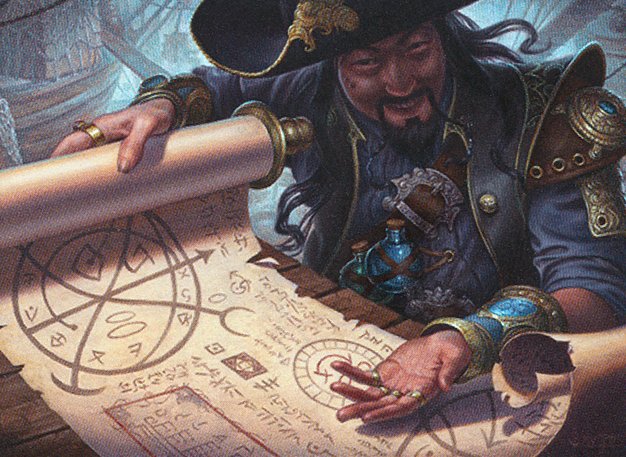Last time, I discussed how an upcoming campaign would handle villains. In short, I made minimal notes about several possible villains. I’ll use those notes to telegraph adventure themes to the party and let them pick what interests them. i.e., Choose Your Own Villain.
This time I’m going to prepare a one-page handout for my players. The handout will need to introduce the major ideas of the campaign and ground the players in the starting location. I’ll draw on the GM advice that I’ve picked up over the years to make the handout, but I will make particular use of Chapter 16 “Building a Lazy Campaign” from Return of the Lazy Dungeon Master by Mike Shea of Sly Flourish and his article, Writing a One-Page Campaign Guide.
If you’d like to discuss D&D 5E campaign prep with me, reach out to me on Mastodon: @[email protected]
Short and to the Point
You may ask, why should we limit ourselves to one page? First, imposed limits refine our creativity. If we can fit our ideas about a subject on just one page, it demonstrates clarity of thought on that subject. Second, beyond clarifying our own thoughts, a one-pager succinctly communicates a subject to our reader. My players are busy people who are taking time out of their days to play a game, not read my prose. You’re taking time out of your day to read my prose, and for that I’m forever grateful!
I will include five sections in the campaign one-pager, following example one-pagers published on Sly Flourish. They are, the campaign hook, six truths of the campaign, a description of the starting location, player character options, and campaign safety tools. Let’s take these sections one at a time as we build our campaign resource.
If you’d prefer to skip to the final product, here it is:
Campaign Hook
As described in the previous blog post, I plan to shape the campaign around the party’s choices. How can I communicate that in a compelling campaign hook? “Go where you want and do what you want,” isn’t compelling–it sounds unprepared. So, let’s list what we have in simple terms. The world is menaced. That menace is undefined. The players decide the campaign direction. Not bad. Now, let’s apply those statements to describe the state of the campaign world. We get:
Shadows stir. Travelers disappear on byways and ships are lost beneath the waves. Those bold enough to venture forth speak of ancient evils awakening in the wilds. Now is a time for heroes. Your actions will determine far more than your fate alone!
Six Truths of the Campaign
Return of the Lazy Dungeon Master suggests we list six truths about the campaign world to help players build characters suited to the campaign. The six truths communicate boundaries of the campaign. Let’s give it a go and see if we can’t make six truths that will help our players find their characters in the world.
- Unsettled lands around Belthanis grow wilder seemingly by the day.
- Settled folk are unprepared to meet the new threats assailing them.
- Poorly understood wild magics abound in the land.
- Altera’s borders with other planes of existence attenuate and weaken.
- Ruins of a long-past elven empire dot the coast of the Azrhiennian Sea.
- Ancient evils lurk in the wilds and beneath the waves.
The Starting Location
I’m starting the campaign in the town of Three Bells described in the podcast DM of None’s “Best First D&D Adventure.” (part 1, part 2) I’ve taken some liberties with the town to fit my own vision. Instead of a fishing village of a few dozen souls, I made it a small town of two thousand. That way, if the party decides to use Three Bells as a home base, it will be large enough to accommodate their needs. I want this section to communicate geography, a bit of history, and some locations in town. This is one of the longer sections should situate the characters for the first session.
Three Bells is a town of two thousand souls built long ago along the shores of the Azrrhenian Sea. It is a common port of call for ships bound to and from the provincial capital, Belthanis, which lies to the north. Year by year, the sea slowly consumes the town. Whether the sea is rising, or the town is sinking, no one can determine. The town takes its name from bell towers that magically chime the hours. Local legend holds that the town is protected by a bronze dragon, though no one has ever seen one.
Notable locations include the expedition outfitters Hale and Well Kept, The Temple to the Twelve Sisters located next to the Sacred Lagoon, and your favorite haunt, The Dragon’s Landing Inn near the edge of town.
Character Options
Here’s where the narrative mask slips. We straight-forwardly list sources where our players can look for character options. While I plan for the group to build characters together, I’d don’t want to start our first session with a fun killing moment by nixing a character option someone brought to the table.
I’m going to cheat a little bit here. I already wrote a player packet for my homebrew campaign setting, too. The player packet lists the ancestries in the world of Alterra, contains some lore, and gives examples of classes. I based this packet in part on the DM of None Player Guide Matt made in Episode 255, “Actual Prep – New Campaign and Advanced Plagiarism.” I’ll point my players to that guide as the starting place for making characters.
Finally, I want to give a couple character hooks to locate the player characters in Three Bells. They’ll act as handholds in case the players struggle to find their character in town.
Build well-rounded characters who will work together to confront the unknown.
Characters begin at 1st level. Follow character creation instructions from the Adventures in Alterra Player Packet. You can select character options and feats from the Player’s Handbook, Xanathar’s Guide to Everything, and Tasha’s Cauldron of Everything.
d6 reasons to be in Three Bells
- You arrived to claim an inheritance only to find the property underwater.
- You came to study under the Wizard Balarax, but she has gone missing.
- You stopped over but no ships have arrived in the harbor for two months.
- You guarded a caravan whose owner won’t risk new dangers on the roads.
- You’re a Three Bells native seeking to save the town from the sea.
- You visited Three Bells’ famed baths, but they didn’t cure your odd malady.
Safety Tools
If the narrative mask slipped before, we now remove it completely. This section makes plain the safety tools employed at my table. I also want to add a reminder that the players get to add to the safety tools. I’m taking this section pretty much right off Mike Shea’s model campaign one-pagers.
We will add to these safety tools during our initial session.
Lines: This game will not contain physical violence towards children, unwanted sexual contact, animal abuse, player-initiated torture, inter-party violence, or inter-party betrayal.
Veils: cannibalism, suffocation, ritual sacrifice, consensual sex, and enemy-initiated torture will be “veiled off screen.”
If at any time you become uncomfortable with the content or direction of the game say, “pause for a minute,”and we will stop to address your concern.
Final Product
And there we have it! A one-page introduction to a new campaign. I’ll print these out with a map of the starting region on the back for my players to keep as a reference.
This exercise does more than make a nifty handout for players. I now feel more prepared to run my campaign. As GMs, we tend to bubble over with ideas and those ideas can sometimes run away with us. Disciplining ourselves and communicating our ideas succinctly focuses our attention on where it belongs, the players. After all, our games happen at the table in the interactions between the GM and the players. The one-page campaign overview lets the GM see the campaign as the players do.
If you’d like to discuss campaign prep with me, or if you’d like to see that player packet in a future post, message me on Mastodon: @[email protected]
Feature image “Merchant Scroll” by Matt Murphy, copyright 2018 Wizards of the Coast

